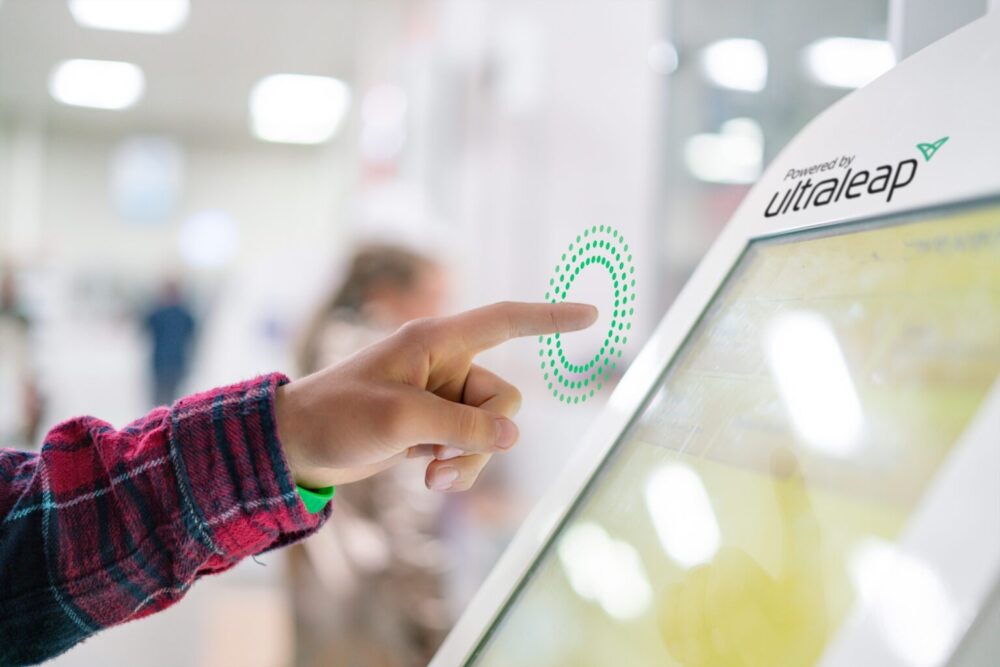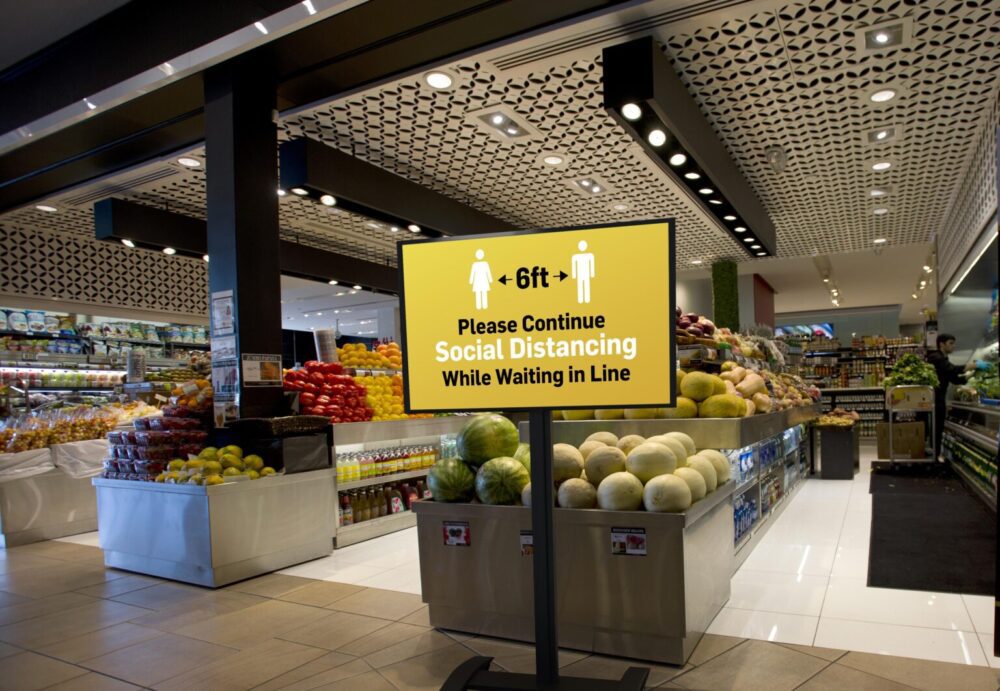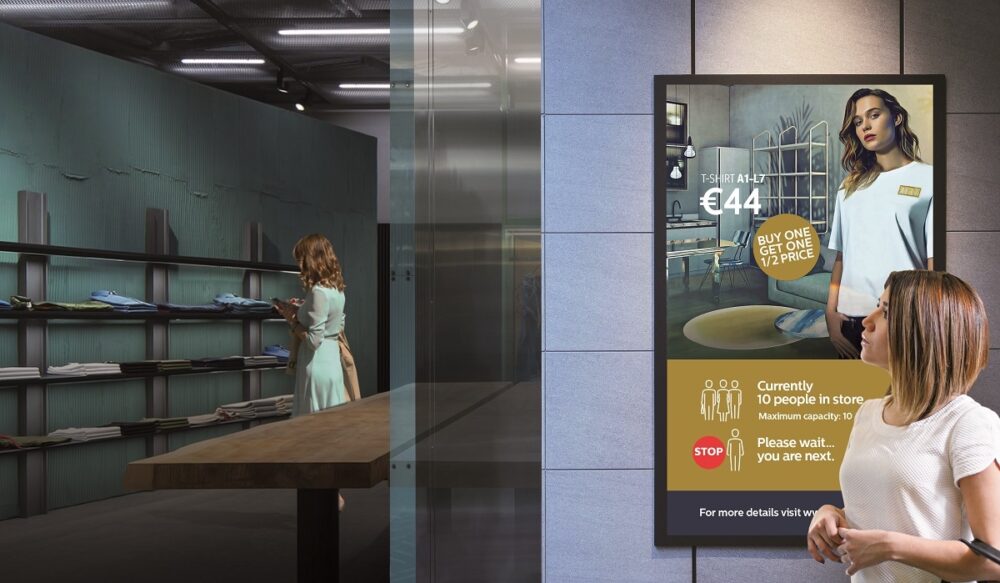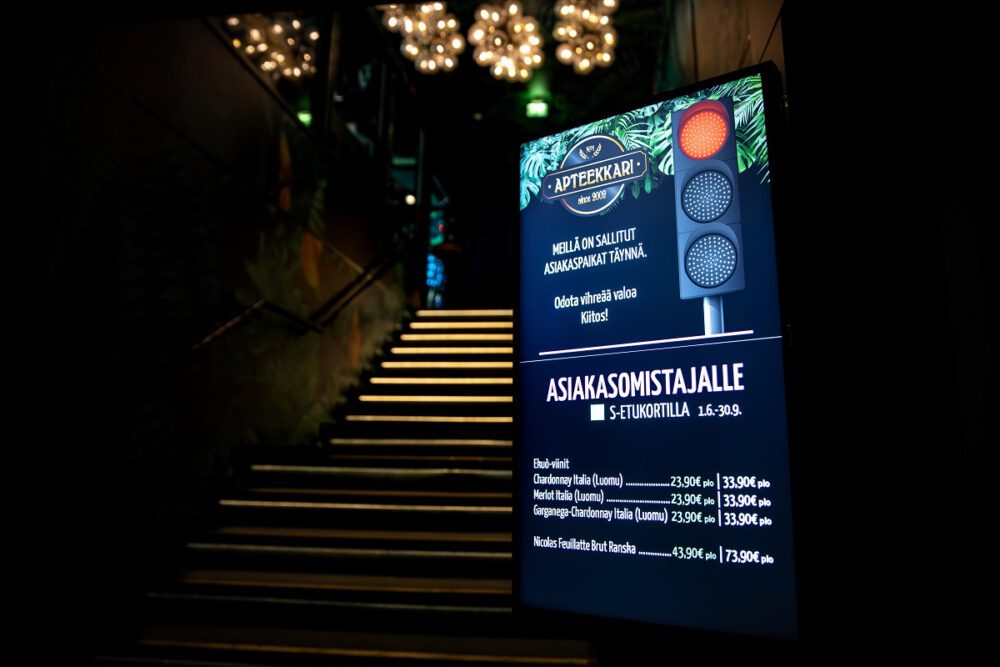For almost half a year now, we’ve been bombarded with messages telling us to wash or sanitise our hands regularly, in order to help slow the spread of Covid-19. With shops opening again in the UK, signage directing consumers to do just this are commonplace inside shops, often accompanied by sanitising stations.
However, even with this guidance and tools, consumer behaviour is changing dramatically, with many limiting the amount of unnecessary contact they have with surfaces. Be it doors, displays or simply handling products before deciding to purchase them, shoppers are becoming much less “hands-on”.
This raises questions as to how retailers should adapt to these changes in their own strategies. After all, if consumers are less likely to pick up products that they do not intend to buy, are they going to interact with existing marketing displays such as digital screens?
Consumer preference for touchless
New research by natural user interface company Ultraleap showed that from 538 respondents, just 12% believed touchscreens in public spaces are hygienic, while around 82% said touchless interfaces would be more hygienic and give them better protection.
The study also found that 71% of consumers in the UK said they expected to interact with touchless technologies such as gesture interfaces in the future, as opposed to traditional touchscreens.

Speaking about the findings, Saurabh Gupta, director of out-of-home product at Ultraleap, said that if people are reluctant to touch public screens, this will make them less likely to interact or make a purchase.
“People clearly still value the convenience of interactive kiosks,” Gupta said. “Finding ways for consumers to use self-serve options without coming into contact with them is likely to be one of the features determining which businesses successfully navigate their way out of the Covid-19 crisis.
“Touchless technologies offer the ease and convenience of touchscreens with the reassurance that you’re operating a clean interface, and removing the need to touch any surface.”
In terms of what Ultraleap has on offer, Gupta said the company’s technologies focus on human input through users and interactions in the 3D space. Gupta said by tracking the position of a user’s hands with its tracking sensor and artificial intelligence (AI) algorithms, they can control digital content by moving their hands in mid-air, without touching a screen.
“Our hand tracking technology can be retrofitted to any screen, kiosk or digital out-of-home interface,” Gupta said. “Our mid-air haptics technology adds virtual touch so you can feel feedback on the palm of your hand without the need for a wearable or controller.
“We can add tactile effects such as virtual sliders, controls or buttons, touchable 3D holograms and immersive sensations such as lightning, raindrops, and bubbles.”
Developing new technologies
Taking these findings into account, what do some of the leading digital display brands think about the future of touchscreens and touchless in the retail sector? Dan Smith, vice president of business development at LG Business Solutions USA, said that despite some concerns, touchscreen technology has a bright future.
Smith said: “In the near term, to be sure, the world is concerned about touching anything in a retail environment that’s exposed to other shoppers, but with new cleaning practices, treatment advances and, ultimately, the development of a vaccine, touchscreens will continue to define the way we interface with our display devices.

“LG offers everything a retailer might need, including traditional digital signage, outdoor retail solutions, video walls, OLED transparent displays and stretch displays. Our experts can help every retailer create an environment that meets their unique merchandising needs.”
However, Smith also went on to reveal that, based on customer feedback, LG is in the process of developing new touchless technologies for use in the retail market and elsewhere. Smith gave the example of LG looking at gesture-based displays and how this may benefit retail customers.
Smith said: “Specifically addressing today’s concerns in retail environments, we are working with a partner to incorporate LG displays into a turnkey, touchless interactive solution. This will allow customers to connect with a digital display and content through mobile device links or voice controls.”
Ready, steady, enter!
Another major digital display brand keen to have its say is Philips Professional Display Solutions. Simone Gagliardi, its international key account director for retail, said that while touchless technologies could have an exciting future in the retail sector, heightened awareness of hygiene mean touchscreen is likely to have a continuing role to play.

Gagliardi said: “The impact of Covid-19 has forced many, if not all, businesses to reflect on the way they conduct themselves, whether that is in a busy office, a supermarket, a restaurant, or a retail store.
“Touchless technology is, of course, a viable and often very cost-effective and highly efficient solution, depending on the environment in which it is being used. There’s no denying touchscreens, especially those used in public by countless people, can act as a breeding ground for germs. That’s not new, but the concerns have been heightened.
“That said, by changing our mindsets around hygiene, carefully and closely monitoring and regularly cleaning touchscreen devices such as those found in stores and shopping centres, and asking customers being asked to sanitise their hands before use, these technologies are far from redundant and can and will remain prominent.”
Philips recently rolled out a new type of touchless digital technology that, though not specifically for marketing use, could play an important role in helping shops to reopen as the crisis continues to ease. PeopleCount is an Android-powered queue management signage and camera solution that provides visibility on the number of people entering and exiting a building, as well as at the point of sale.

Developed and operated in collaboration with partners such as Bosch Security and Safety Systems and NowSignage, Gagliardi said PeopleCount helps to ensure compliance with government guidelines and also customers and staff the confidence to enter and reengage with businesses.
Installed at the building’s entrances, Philips displays provide customers and staff with information about capacity at any one time, alerting them whether it is safe or not safe to enter via a simple traffic light system. The displays also double-up to provide new means of communication, such as waiting times, marketing or what to expect in store.
Gagliardi said: “Importantly, the solution requires no physical interaction and allows customers to self-manage, only entering stores when it is safe to do so.
“We continue to be overwhelmed by the response from the market to date, with interest from all over the world. The beauty of PeopleCount is its versatility so, while we initially announced the solution for retail, we have been inundated with requests and conference calls with businesses in a variety of different industries and verticals where footfall plays an important factor.”
While concerns over hygiene factors when it comes to using touchscreen displays in retail environments are understandable, it appears this technology still has an important role to play. However, it also seems that touchless could be an exciting prospect for retailers looking to not only offer a more hygienic way of interacting with consumers, but offering something a little bit different in terms of the in-store experience.
















